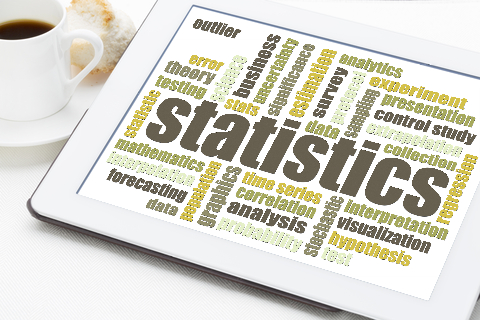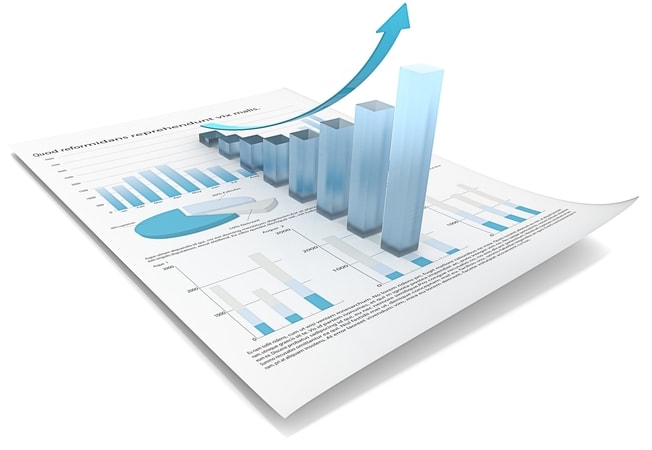Factors We Consider When Conducting Statistical Tests
The magnitude of mathematical tools that a student or researcher should choose from when analyzing quantitative data collected from a study may necessitate reaching out for help to conduct statistical tests. Most are the times when one conducts research alongside other academic, professional, or personal commitments, hence, may lack the time to find out and decide on the right statistical test to run on their data.
With the best statistical analysis offered by experts in our credible company, clients do not have to worry about which test statistic to run and in which conditions. We are conversant with all the factors that should be considered when conducting statistical tests.
We calculate the test statistic to describe the extent to which the relationship between variables in the test differs from the null hypothesis. This article outlines the various factors considered by our experts when offering help to conduct statistical tests.
Before a study is conducted, it is fundamental to specify the level of significance and the type of the statistical test to be calculated in the protocol so that the results will not influence the choices. The choice of the statistical tests appropriate for a particular dataset depends on the questions to be answered and the null hypothesis formulated. Discussed below are some of the factors we consider when conducting a statistical test.

1. The appropriate statistical test for a dataset
There are different statistical tests that can be conducted on a specific dataset in different conditions. Before choosing to calculate a specific test statistic for a particular dataset, our experts must consider various factors such as:
a). Type of study design
The study designs used in comparison tests for the results of the endpoint under particular conditions can be paired (dependent) or unpaired (independent). Paired designs can be elaborated by comparison before and after treatment with two groups of equal size.
In unpaired study designs, the results of each independent variable are only available under a single set of conditions and the groups may vary in size. The chi-square test statistic can be used to compare more than two groups or categories of the outcome variable. For the unpaired samples, some of the applicable statistics include Fisher's exact test for binary outcomes.
b). Number of variables
The number of variables to be analyzed influences the choice of test that can effectively determine the presence or absence of a statistically significant relationship between the predictor and outcome variables.
There are sets of tests that are used on single variables, others to analyze relationships between two variables. Moreover, there are other sets that can only be used to model multivariate relationships. It is, therefore, fundamental to first understand the number of variables being analyzed in order to offer effective and appropriate help to conduct statistical tests.
c). Type of data and levels of measurements
There are several levels of measurements/types of data and multiple different test subjects in statistical research that vary in degrees of significance. These include:
- Ratio measurements.
- Interval measurements.
- Ordinal measurements.
- Nominal measurements.
Variables that conform only to nominal and ordinal measurements are hardly measurable numerically and are, therefore, classified as categorical variables. Additionally, ratios and interval measurements are numerical in nature and are, therefore, categorized as quantitative or continuous variables.
In our help to conduct statistical tests, we ensure utmost specificity in the definition of the multiple measurements provided in the dataset and the type of variables. The student's t-test statistics can be used for continuous variables when assessing the similarity of the expected values for two groups with the basic assumption that the data are normally distributed.
Such groups can be paired or unpaired. In addition, the analysis of variance (ANOVA) can be used when comparing more than two paired groups. To test for ordinal or continuous variables, one can use the Mann-Whitney U test which doesn't require normal distribution of data. Other statistics include the correlation tests that are used to determine a linear correlation between two continuous variables that are normally distributed and the z test for comparisons between proportions.
2. The main study hypothesis
The study hypothesis has to be formulated in the initial stages before the data analysis phase. Both confirmatory and exploratory hypotheses should be pre-determined because they affect the choice of statistical tests to be conducted. Statistical tests can only be conducted in studies that require statistical hypothesis testing. The probability of obtaining observed differences between two groups in a study can be real or by chance. We reject the null hypothesis if the p-value calculated is less than the prior defined level of significance.
3. Suitable parametric or nonparametric tests requirements
The inferential statistics can be further divided into parametric and nonparametric tests. Parametric tests' requirements are stricter than the nonparametric and can provide robust inferences from a particular sample size. The dataset must be completely compliant with the basic assumptions of statistical tests.
To conduct a parametric test, we first evaluate whether the data are compliant with the basic assumption that the variables are continuous and normally distributed. Nonparametric tests are applicable for data types that are not normally distributed. Clients who purchase the services of a statistician from our company are guaranteed the best help regardless of the presence of independent or dependent variables in their datasets or the type of parametric or nonparametric tests to be conducted. The common types of parametric tests considered by statisticians in our company include:
-
Regression tests
The regression test statistics are used to determine cause-and-effect relationships. They are applicable in estimating the effect of one or more continuous variables on another type of variable. The linear and logistic regression tests are used under different conditions to determine cause-and-effect relationships between predictor and outcome variables.
-
Comparison tests
Comparison tests are useful when determining group means differences; testing the effect of a particular categorical variable on the mean value of a specific characteristic. The t-test compares the means of two groups. The ANOVA and MANOVA tests are applicable in the comparison of means for more than two groups.
-
Correlation tests
The correlation tests check the relationships between variables without a hypothesis on their cause-and-effect relations. Such tests are important when determining whether two variables that are to be used in multiple regression tests have an autocorrelation. We can correctly calculate the appropriate correlation coefficient to determine the strength of relationships between variables.
We use nonparametric tests mostly when the common statistical assumptions are not strictly complied with. Nonparametric methods help in comparing observed proportions and have no alternative parametric tests. Examples include the Chi-square test of independence and the sign test. Other nonparametric alternatives include the Kruskal Wallis test and the Spearman correlation (r) for two quantitative variables.
4. Statistical significance of relationships
A statistically significant relationship between a predictor and outcome variable can be inferred if the value of the test statistic is extreme compared to that calculated from the null hypothesis. In case the value of the test statistic is less extreme relative to that calculated from the null hypothesis, one can infer that there was no statistically significant relationship between the outcome and predictor variables.
In case one experiences difficulties when determining the presence of a statistically significant difference between two samples from the same population, one can contact us for the best statistical analysis offered by experts in our company.
5. Statistical assumptions met by the data
The statistical testing is based on particular assumptions about the subject data file. In our attempts to offer the best help to conduct statistical tests, we must first determine whether the particular data are completely compliant with the common assumptions such as the independence of observations, normality of distribution, and the homogeneity of variance.
In the case where the data are not compliant with the normality and homogeneity of variance assumptions, we can conduct nonparametric statistical tests for comparison without taking into account the distribution patterns.

6. Aims and objectives of the study
The choice of a statistical test also depends on the aims and objectives of a study, which may be to determine the predictors of an outcome variable or a comparison of the means between two independent variables. Both scenarios require different statistical tests to be conducted on the dataset to achieve the objectives.
7. Type of distribution
In addition to the data types, statistical tests also vary with the distribution. Before choosing a suitable measure to represent data comprising of continuous variables, one must understand how the values are distributed. Hypothesis testing techniques use the measures for comparisons between/among groups for the calculation of significance levels.
When the continuous variables in a dataset follow a normal distribution pattern, the mean is the most appropriate representative measure. In the case where the variables are not normally distributed, the median can be used as the appropriate measure for the particular dataset.
Considering these factors enables us to choose and correctly conduct the right statistical test on a particular dataset. Anyone wishing to hire a statistician to conduct statistical tests for their research data is assured of the best service with a money-back guarantee in case of dissatisfaction. Our customer support team understands that every client matters and, therefore, strive to provide them with a delightful experience. Our help to conduct statistical tests is available and accessible on a 24/7 basis, thus, one can place an order, enquire about work progress, or consult with us at any time of the day or night.





